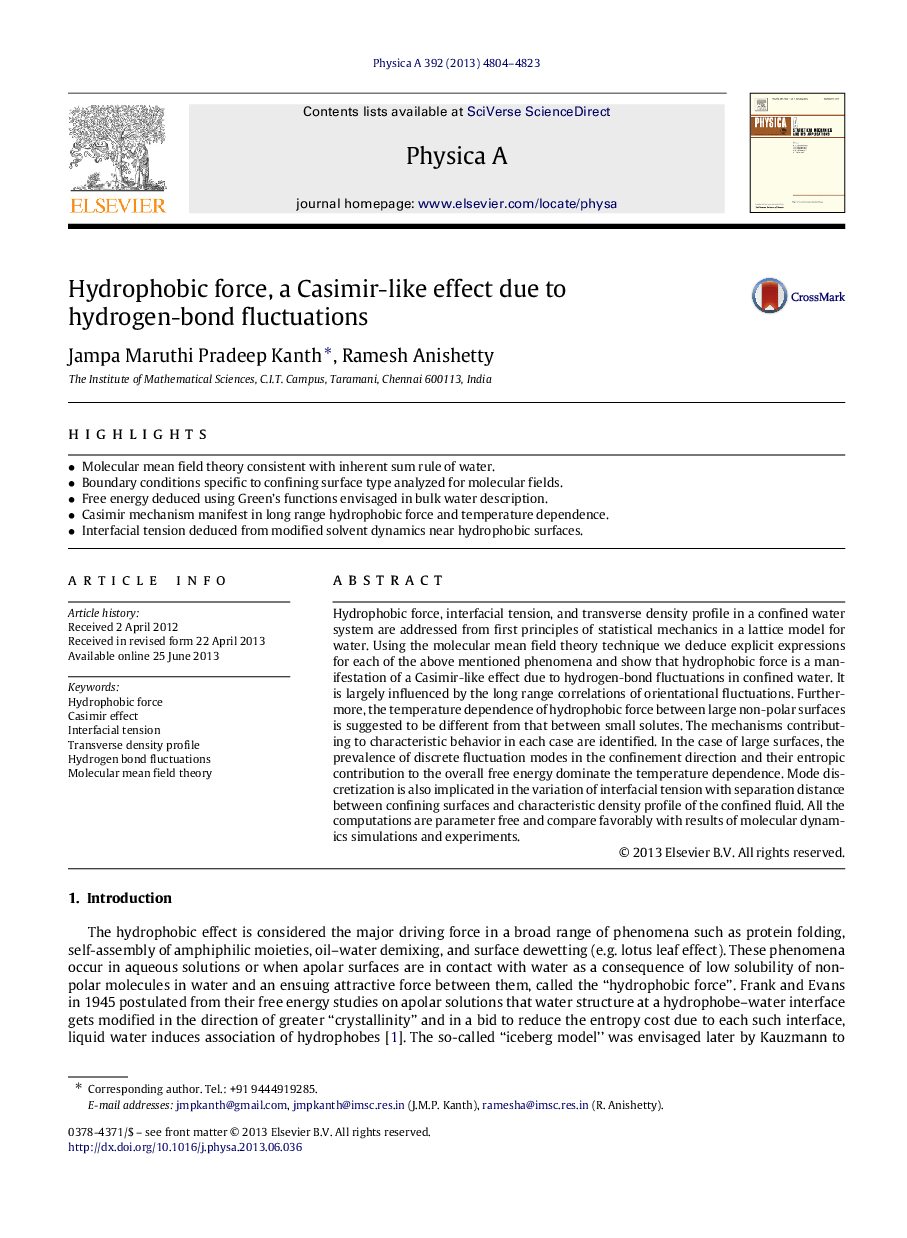| Article ID | Journal | Published Year | Pages | File Type |
|---|---|---|---|---|
| 10481877 | Physica A: Statistical Mechanics and its Applications | 2013 | 20 Pages |
Abstract
Hydrophobic force, interfacial tension, and transverse density profile in a confined water system are addressed from first principles of statistical mechanics in a lattice model for water. Using the molecular mean field theory technique we deduce explicit expressions for each of the above mentioned phenomena and show that hydrophobic force is a manifestation of a Casimir-like effect due to hydrogen-bond fluctuations in confined water. It is largely influenced by the long range correlations of orientational fluctuations. Furthermore, the temperature dependence of hydrophobic force between large non-polar surfaces is suggested to be different from that between small solutes. The mechanisms contributing to characteristic behavior in each case are identified. In the case of large surfaces, the prevalence of discrete fluctuation modes in the confinement direction and their entropic contribution to the overall free energy dominate the temperature dependence. Mode discretization is also implicated in the variation of interfacial tension with separation distance between confining surfaces and characteristic density profile of the confined fluid. All the computations are parameter free and compare favorably with results of molecular dynamics simulations and experiments.
Related Topics
Physical Sciences and Engineering
Mathematics
Mathematical Physics
Authors
Jampa Maruthi Pradeep Kanth, Ramesh Anishetty,
